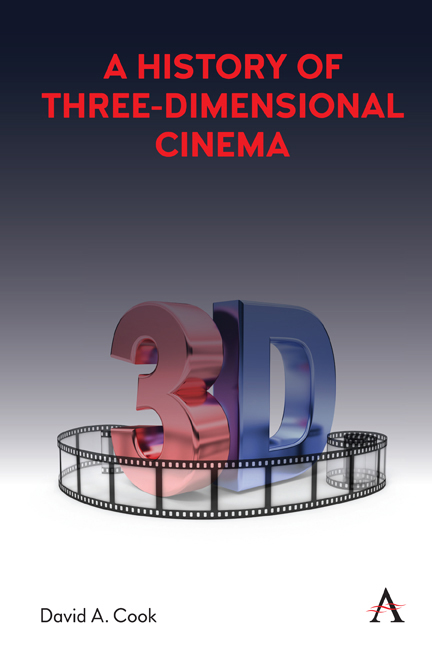Book contents
- Frontmatter
- Dedication
- Content
- List of Figures
- Acknowledgements
- Prefatory Note/Introduction
- 1 “A New Way to Simulate Presence”: The Foundations of Stereoscopic Entertainment, 1427–1888
- 2 “A Very Vivid Impression of Movement”: Early 3D Cinema, 1895–1952
- 3 “See It in 3 Dimension!”: The First Hollywood 3D Boom, 1952–55
- 4 Stereoscopic Revival, 1970–85
- 5 The Age of IMAX, or the “Immersive Cinema,” 1986–2009
- 6 The Blockbuster Years: Digital 3D, 2010–20
- 7 “A Different Kind of Mental Image”: Some Aesthetic Considerations about 3D
- 8 “Experience on Demand”: Virtual Reality
- 9 Conclusion
- 3D Discography: Discs Viewed or Sampled in Preparation for This Book
- Selected Bibliography
- Index
7 - “A Different Kind of Mental Image”: Some Aesthetic Considerations about 3D
Published online by Cambridge University Press: 22 October 2021
- Frontmatter
- Dedication
- Content
- List of Figures
- Acknowledgements
- Prefatory Note/Introduction
- 1 “A New Way to Simulate Presence”: The Foundations of Stereoscopic Entertainment, 1427–1888
- 2 “A Very Vivid Impression of Movement”: Early 3D Cinema, 1895–1952
- 3 “See It in 3 Dimension!”: The First Hollywood 3D Boom, 1952–55
- 4 Stereoscopic Revival, 1970–85
- 5 The Age of IMAX, or the “Immersive Cinema,” 1986–2009
- 6 The Blockbuster Years: Digital 3D, 2010–20
- 7 “A Different Kind of Mental Image”: Some Aesthetic Considerations about 3D
- 8 “Experience on Demand”: Virtual Reality
- 9 Conclusion
- 3D Discography: Discs Viewed or Sampled in Preparation for This Book
- Selected Bibliography
- Index
Summary
Toward the end of the 2010s, many proponents of 3D thought it had arrived to stay. Some industry insiders were convinced that the process, in its digital form, was the shape of the future, and several scholarly books and articles were written at the time extolling its aesthetic virtues. The most comprehensive of these was Miriam Ross's 3D Cinema: Optical Illusion and Tactile Cinema (2015), yet all dealt essentially with two opposing phenomena—positive parallax (images receding from the screen in depth) and negative parallax (images emerging from the screen into audience space). Flat images exist at zero parallax, where objects seem to reside on the screen's surface. While the best stereoscopic scenography attempts to create spatial continuity between objects in positive and negative parallax, it is negative parallax that gets most of the attention. Whatever the degree of continuity, however, the stereoscopic cone of vision is only about 130 degrees. Viewers cannot turn their heads and crane their necks to see what is behind them. (In fact, in most systems significant head movement will destroy the 3D illusion within the cone.) The illusion of 360-degree space—and moving through it rather than simply watching it—can only be experienced through the technology of Virtual Reality (VR), which is the next step in the march toward André Bazin's “total cinema” (see Chapter 8).
As Ross suggests, stereoscopy is not merely an effect added to preextant moving images but one that provides “a unique kind of visuality” (a term borrowed from Thomas Elsaesser) by offering an illusory yet simultaneously tangible sense of presence, which is fragile precisely because it is false. Although three-dimensional moving images can be understood as a means of replicating natural human vision, they should also be understood as a form of illusion that makes the stable boundaries of the screen seem permeable and diminishes “the stability of the self in space.” This is especially true of IMAX 3D, where the borders of the screen are lost and stretch beyond the audience's field of view in a kind of floating window; in standard digital 3D, the edges of the screen are still highly visible and can conflict with feelings of immersion when an audience is made aware of them.
- Type
- Chapter
- Information
- A History of Three-Dimensional Cinema , pp. 127 - 136Publisher: Anthem PressPrint publication year: 2021



